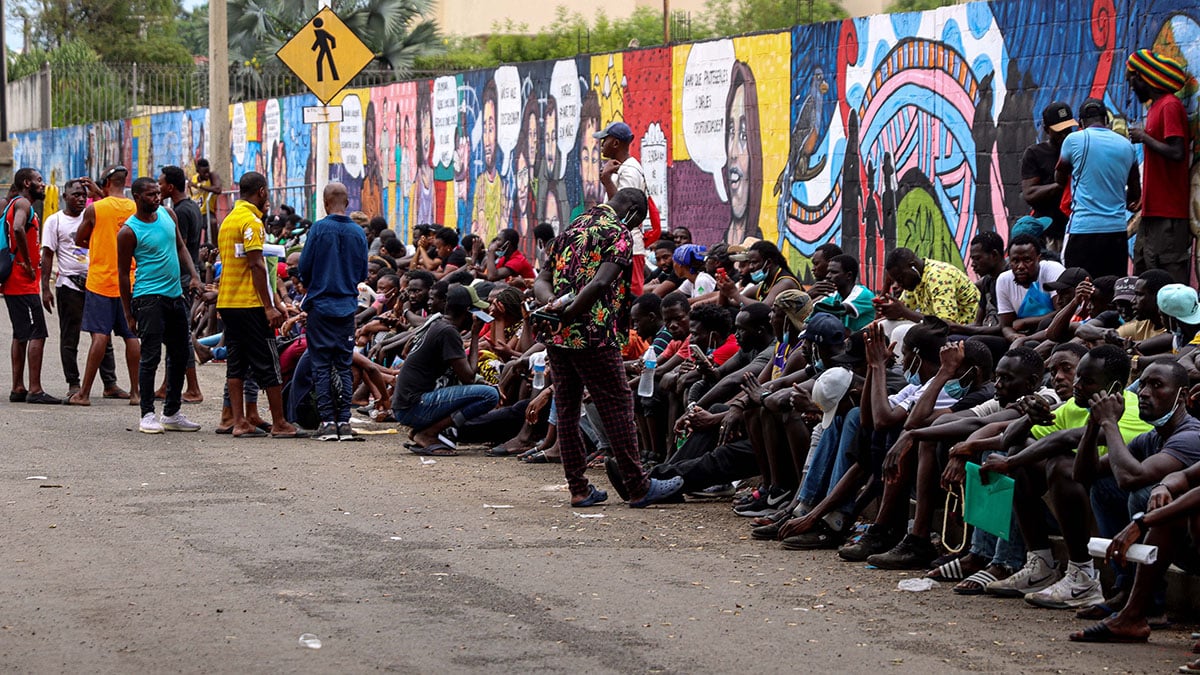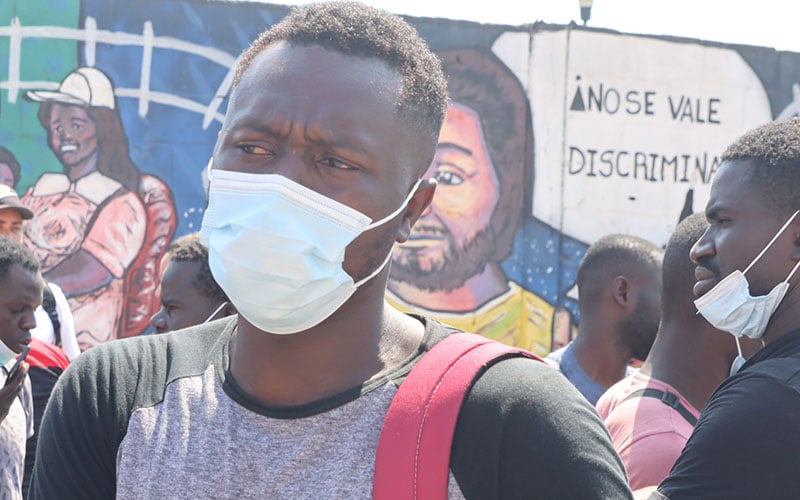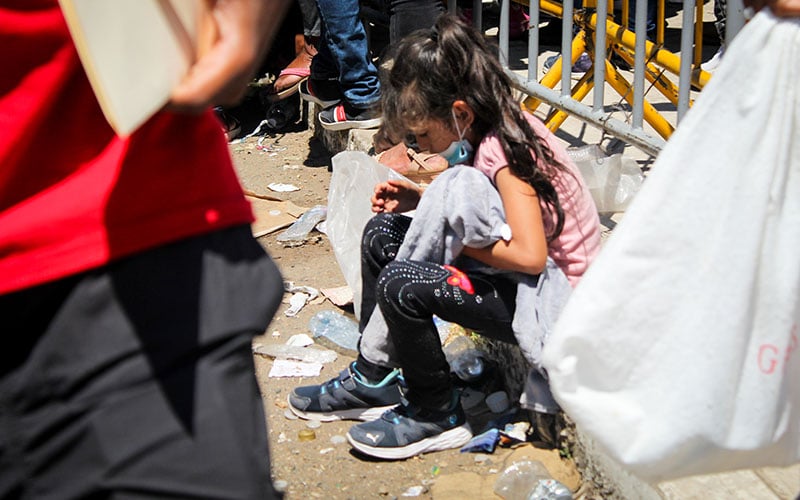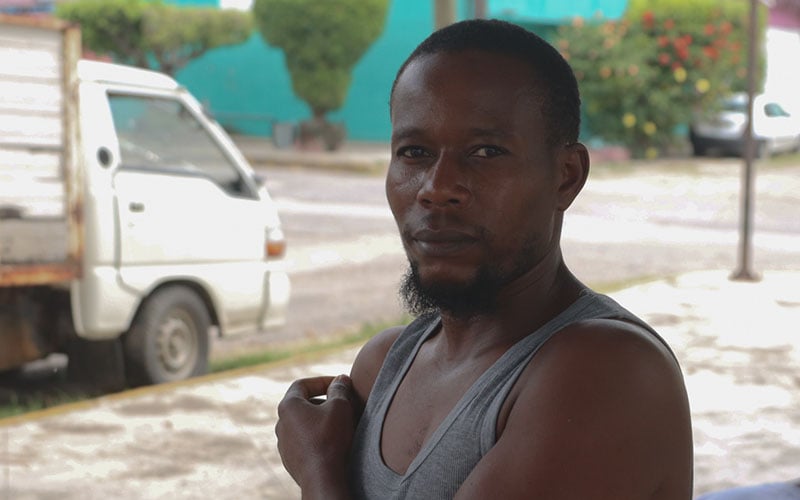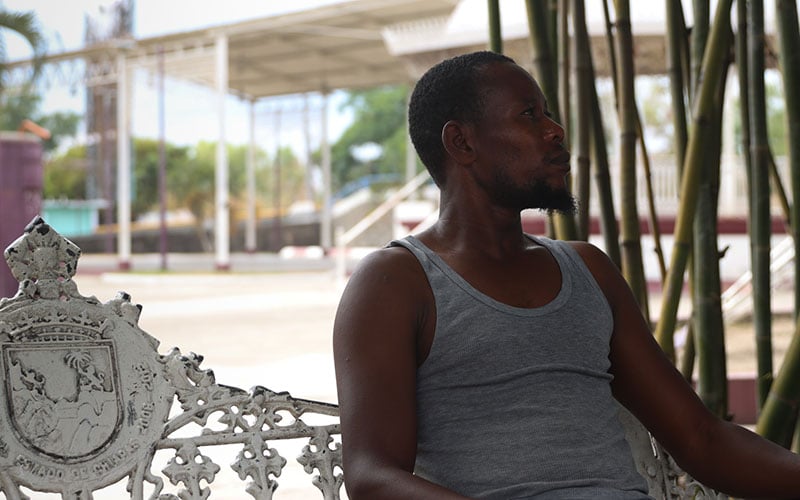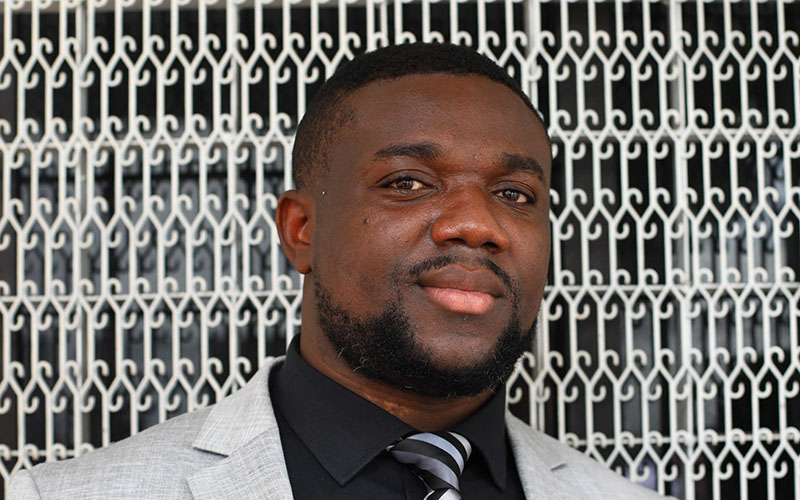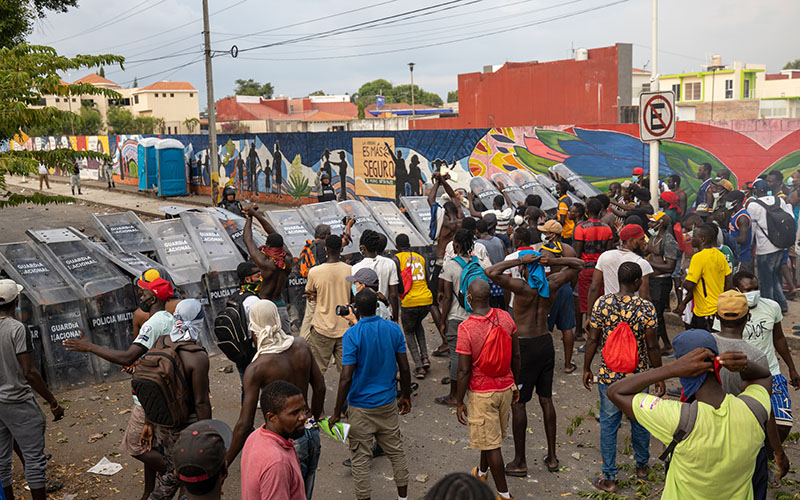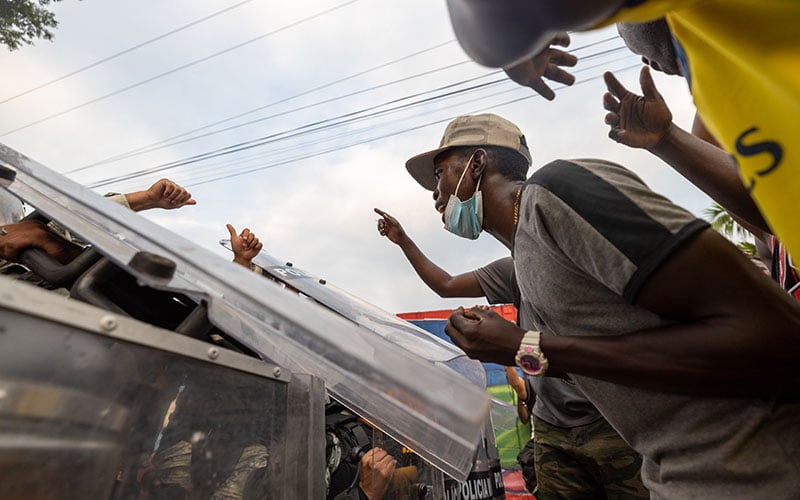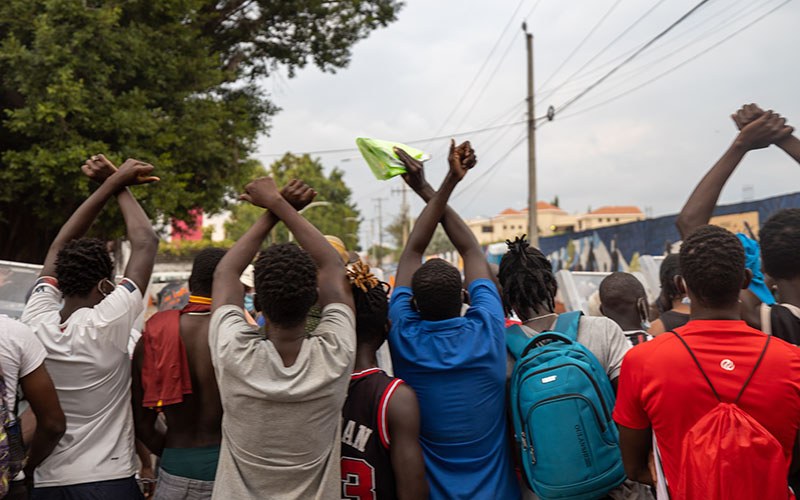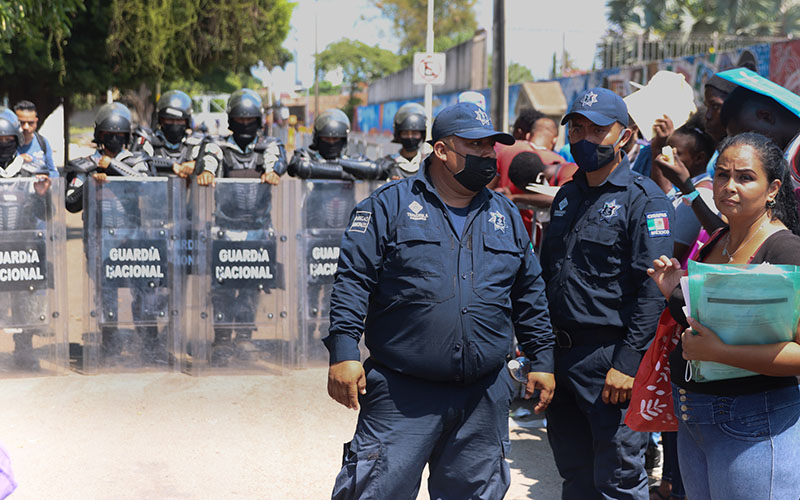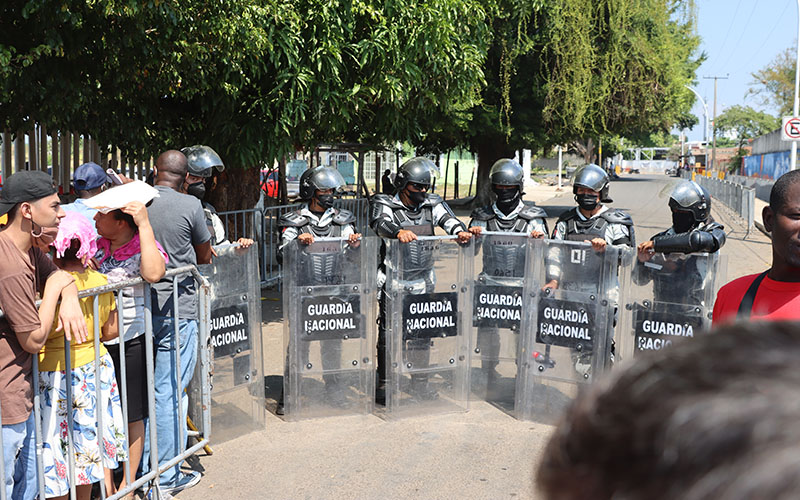Morvensky sits on a bench opposite his family, looking at the park behind him and just trying to pass the time. His daughter, 2½, prances around as her mother makes sure she doesn’t wander too far from the group.
“She’s been sick with diarrhea, and a fever,” said Morvensky, gazing at the girl with concern. He couldn’t afford the doctor’s visit plus the medication she needed.
Morvensky, along with his wife and two children, left Haiti because of political and economic strife. Their first stop was Chile, where they lived for about five years before leaving because work was hard to find and neither he nor his wife had the necessary work permits.
“If you don’t have residency in Chile, you don’t have work, you have nothing,” he said. They decided to try their luck by traveling to Tapachula, with the goal of eventually settling down in the United States.
However, like the tens of thousands of other migrants stuck in Tapachula, Morvensky discovered the immigration process was slower and more complicated than he expected. By early March 2022, he had been waiting five months for his first appointment with COMAR.
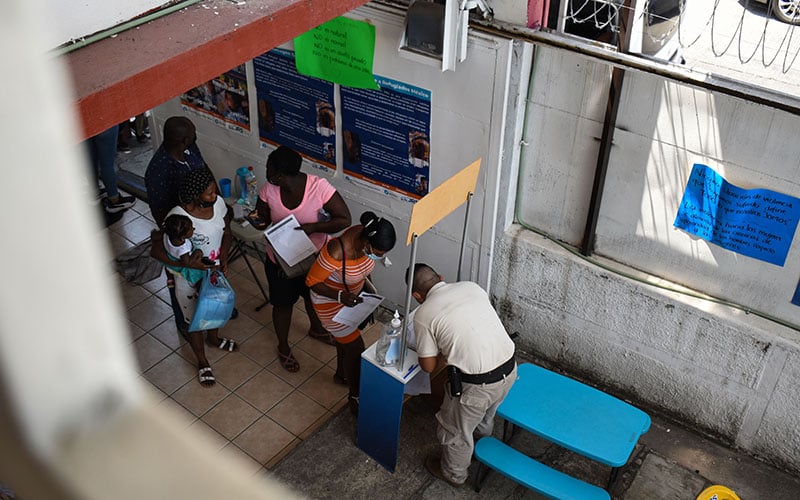
Haitian migrants sign up for an informational meeting on the immigration process in Tapachula, Mexico, on March 7, 2022. The meeting, hosted by the international aid organization Jesuit Refugee Services, was held in Spanish and Creole. The lack of Creole translators and services is an additional hurdle for Haitians. (Photo by Juliette Rihl/Cronkite Borderlands Project)
This isn’t the first time immigration authorities in Tapachula have been accused of favoring migrants who speak Spanish. Black migrants repeatedly claim that immigration authorities, notably the INM, will confiscate or destroy their immigration documents alleging they’re fake. In more extreme cases, Haitian migrants say, they are threatened with deportation to Guatemala or physically assaulted by the national guard. Others are pressured to pay money to these authorities or run the risk of being arrested and even deported. Although some of these claims are shocking, historians and civil rights advocates say Mexico has a long history of racism toward Black people.
Slavery and Afro-Mexicans
According to Colin Palmer, author of “Slaves of the White God,” which examines the history of Blacks in Mexico from the 1500s, Africans initially were brought to colonial Mexico as slave labor to replace Indigenous laborers, who had been decimated by smallpox, diphtheria, measles and other European diseases unknown in the New World.
“The introduction of African slaves into Mexico was in part a response to the labor shortage stemming from the decline of the Indigenous population during the 16th century,” Palmer wrote. “Spanish mistreatment of the Indians and a number of disastrous epidemics contributed to this demographic catastrophe.”
As the Indigenous population continued to plummet, the Spanish increasingly needed a new labor source to work in its silver mines and sugar cane plantations. To solve the labor shortage, the Bishop of Chiapas, Bartolome de las Casas, a Spaniard known for his opposition to enslaving Indigenous people, suggested importing Africans. In 1521, the first African slaves touched the coast of Mexico in what today is the state of Veracruz. According to Origins, a website created by historians at Ohio State University, the prevalent belief at the time was that Africans were hardier and less susceptible to disease and death.
Data from SlaveVoyages, a collaborative website that logged the transatlantic and intra-American slave voyages dating from the 14th century, at least 153,000 Africans were imported into what was then called New Spain, which at its peak covered all of Mexico, Central America and the Isthmus of Panama.
Slavery in Mexico formally was outlawed in 1837, 16 years after Mexico won its independence from Spain in 1821. But even with the abolition of slavery, the Spanish left behind a legalized racial caste system, a hierarchy determined by familial ancestry, according to a 2009 article by Herbert G. Ruffin, an associate professor of African American studies at Syracuse University. At the bottom of this hierarchy were African slaves and their descendants. By law, Africans were barred from holding many positions within Mexican society and generally held no power or standing, the article states.
In many ways, the remnants of that caste system still are evident in Mexico. For example, Black Mexicans, who now mostly live in the coastal states of Veracruz, Oaxaca and Guerrero, finally were able to self-identify as Afro-Mexican in the 2015 intercensal survey and the 2020 national census, but only after repeatedly petitioning the government. In 2019, the Mexican constitution was amended to officially recognize Afro-Mexicans. However, even with these advancements, Afro-Mexicans still must deal with racial discrimination. In a 2014 study published in the Hispanic Journal of Behavioral Sciences, a quarter of Mexicans said they would not rent to a person of African descent, and darker skin overall often is associated with a lower quality of life in Mexico.

Although Mexico formally outlawed slavery in 1837, the Spaniards left behind a legal caste system that put Africans and their descendants at the bottom of society. (Photo by Hector Adames, Associate Department Chair at the Chicago School of Professional Psychology)
“It’s very difficult,” Morvensky said through a Spanish translator. “I can’t spend too much time thinking about (discrimination). The most important thing is how we can survive here. How do we buy food? Pay rent?”
Morvensky said he briefly worked as a vendor at a supermarket, but he was paid only 150 pesos a day – equivalent to $7 – which is Mexico’s minimum wage.
Seeing no hope for a future where he can provide for his family in Tapachula, Morvensky still is waiting for his appointment with COMAR to receive the documentation to move to other states in Mexico in order to find work.
Finding work, however, may be the least of Morvensky worries. He must also hope that neither he or any of his family members are arrested by Mexico’s immigration authorities and taken to any one of Tapachula’s numerous detention facilities.
Siglo XXI
The city’s main migrant detention facility, Tapachula Estacion Migratoria, known locally as Siglo XXI (Spanish for “21st century”), sits off a narrow road surrounded by grass and brick walls. At its front doors, people pace anxiously back and forth, waiting to hear about the condition of friends and loved ones inside.
According to the Global Detention Project, a nonprofit that promotes the human rights of those who have been detained for reasons pertaining to their immigration status, Siglo XXI has a standard capacity of 960 detainees. However, multiple reports, including from the Migration Policy Institute and several news networks, have reported that the facility faces severe overcrowding and flea infestations.
A report by the project in February 2021 also lists instances of discrimination experienced by Black immigrants in detention facilities in Mexico.
“In Mexico, for example, Africans have experienced worse detention conditions than other migrants and are more easily targeted for extortion,” the report states. In more serious cases, it says, African migrants are regularly denied food until all migrants from Spanish speaking countries have eaten first.
In a separate report, conducted by researchers for the Black Alliance for Just Immigration, Black migrants were told that detention was necessary for the regularization of immigration status in Mexico, but “this isn’t the case” for non-Black migrants. Black migrants also tell of denial of water and medical care and general abuse from jail officials.
“Black people are dying in detention and the Mexican officials do not even care enough to allow us access to proper medical care” the report quoted one detainee.
